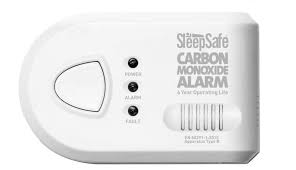The Importance of CO2 Alarms in Ensuring Home Safety
Carbon monoxide (CO2) is a silent killer that can pose a serious threat to your health and safety at home. This colourless, odourless gas is produced by the incomplete combustion of fuels such as gas, oil, coal, and wood. Without proper ventilation or detection, CO2 can build up in enclosed spaces and lead to poisoning or even death.
One crucial tool for safeguarding your home against CO2 exposure is a CO2 alarm. These devices are designed to detect the presence of CO2 in the air and emit a loud alarm to alert occupants of potential danger. By installing CO2 alarms in key areas of your home, such as near bedrooms and living spaces, you can provide an early warning system that can save lives.
It’s essential to ensure that your CO2 alarms are properly maintained and regularly tested to guarantee their effectiveness. Check the batteries frequently and replace them as needed. Additionally, follow the manufacturer’s instructions for installation and placement to maximise the coverage area of the alarms.
Remember that CO2 alarms are not a substitute for proper ventilation and regular maintenance of fuel-burning appliances. It’s crucial to have your heating systems, chimneys, and vents inspected annually by qualified professionals to prevent CO2 leaks and ensure safe operation.
By investing in quality CO2 alarms and practising good safety habits at home, you can protect yourself and your loved ones from the dangers of carbon monoxide poisoning. Stay vigilant, stay informed, and stay safe!
7 Essential Tips for Effective Carbon Monoxide Alarm Safety in Your Home
- Install carbon monoxide alarms on every level of your home.
- Place carbon monoxide alarms near sleeping areas.
- Test your carbon monoxide alarms regularly to ensure they are working properly.
- Replace the batteries in your carbon monoxide alarms at least once a year.
- Ensure proper ventilation in your home to prevent carbon monoxide buildup.
- Have gas appliances serviced annually by a qualified technician.
- If the carbon monoxide alarm sounds, evacuate the premises and call emergency services.
Install carbon monoxide alarms on every level of your home.
To enhance the safety of your household, it is recommended to install carbon monoxide alarms on every level of your home. By placing these alarms strategically throughout different floors, you can ensure comprehensive coverage and early detection of any potential carbon monoxide threats. This proactive measure helps to safeguard all occupants in various areas of the house, providing a crucial layer of protection against the silent dangers of CO2 exposure. Remember, prevention is key when it comes to maintaining a safe living environment for you and your family.
Place carbon monoxide alarms near sleeping areas.
To enhance the effectiveness of carbon monoxide alarms, it is recommended to place them near sleeping areas in your home. By positioning the alarms in close proximity to bedrooms, you can ensure that any detection of carbon monoxide during the night triggers an immediate alert, providing valuable time for occupants to evacuate safely. This proactive measure helps safeguard against the silent threat of CO2 poisoning while prioritising the safety and well-being of everyone in the household.
Test your carbon monoxide alarms regularly to ensure they are working properly.
It is crucial to regularly test your carbon monoxide alarms to verify that they are functioning correctly. By conducting routine tests, you can ensure that your CO2 alarms are operational and capable of detecting any potential threats of carbon monoxide in your home. Regular testing provides peace of mind and helps maintain a safe living environment for you and your family.
Replace the batteries in your carbon monoxide alarms at least once a year.
It is crucial to replace the batteries in your carbon monoxide alarms at least once a year to ensure their reliable operation. By maintaining fresh batteries, you can be confident that your CO2 alarms will continue to provide early detection of this silent but deadly gas, offering you and your loved ones essential protection against potential harm. Regular battery replacement is a simple yet effective way to uphold the effectiveness of your CO2 alarms and maintain a safe living environment.
Ensure proper ventilation in your home to prevent carbon monoxide buildup.
Proper ventilation is a crucial factor in preventing the buildup of carbon monoxide in your home. Ensuring that fresh air can circulate freely throughout your living spaces helps to dissipate any CO2 that may be present, reducing the risk of poisoning. By keeping vents clear, opening windows periodically, and maintaining a healthy airflow, you can create a safer environment for you and your family. Remember, good ventilation combined with CO2 alarms provides a comprehensive approach to safeguarding against this silent threat.
Have gas appliances serviced annually by a qualified technician.
To ensure the effectiveness of your CO2 alarm and protect your household from the dangers of carbon monoxide poisoning, it is essential to have gas appliances serviced annually by a qualified technician. Regular maintenance and inspection of fuel-burning appliances, such as boilers, heaters, and stoves, can help prevent CO2 leaks and ensure their safe operation. By following this important tip, you can enhance the overall safety of your home and provide added peace of mind for you and your family.
If the carbon monoxide alarm sounds, evacuate the premises and call emergency services.
In the event that the carbon monoxide alarm sounds, it is crucial to take immediate action to ensure your safety and well-being. Evacuate the premises without hesitation and move to a safe location outdoors. Do not re-enter the building until emergency services have inspected and declared it safe. Call emergency services as soon as possible to report the alarm and seek professional assistance. Your swift response to a carbon monoxide alarm can make a significant difference in preventing harm and protecting yourself and others from potential dangers.

